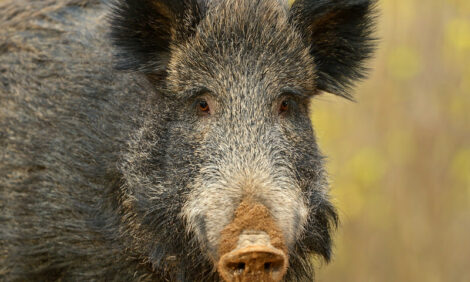|
Need a Product or service?
|
|
...to bear country-of-origin labels, the American Meat Institute (AMI) said today in comments to AMS.
Under the 2002 Farm Bill, fresh beef, pork and lamb must bear country-of-origin labels beginning in September 2004. Processed meat products are exempt from the country-of-origin (COL) law. However, the original statutory language was unclear in its definition of processed products and AMS now is attempting to write a definition.
“The simplest, fairest, and most logical approach is to define processed food item more broadly than was done in the guidelines. A covered commodity should not have to bear country-of-origin labeling if the product in which the covered commodity is included bears an ingredient statement,“ AMI Senior Vice President of Regulatory Affairs and General Counsel Mark Dopp said.
Without a “bright line standard,“ such as the presence of an ingredient declaration, AMS will be forced to make subjective decisions about whether products have been “materially changed“ in processing and whether or not those products are subject to mandatory COL labeling. In response to consumer demand for greater convenience and added value many meat companies have added seasonings, marinated products, and engaged in other processing steps to many products. The guidelines, however, create substantial uncertainty about which of those products must bear country-of-origin labeling.
“Without clearer direction from AMS the agency is at risk of creating opportunities for enforcement officials to make conflicting determinations about whether products must bear country-of-origin labeling. Indeed, an attempt by AMS to pursue penalties in such circumstances could be challenged on the grounds that the regulations are void for vagueness.“
Although AMI today provided substantial comments, the Institute reiterated its opposition to mandatory country-of-origin labeling. “Many AMI members will be subject to the regulatory scrutiny imposed by the labeling requirements. Accordingly, everyone benefits by working cooperatively to make this cumbersome program as practical and feasible as possible,“ Dopp said.
In its comments, the Institute urged AMS to address the “pipeline“ problem in which older animals may go to slaughter having been born prior to COL requirements. As a result, their origins likely won’t be known. These animals should be subject to a grandfather clause exempting them from COL because of the time frames at issue, according to Dopp.
AMI also detailed COL’s substantial costs to meat packers and processors due to the reconfigurations necessary to track the source of animals and raw materials, storage required to segregate products, recordkeeping practices and the new labels themselves.
Using conservative estimates of per head costs, AMI estimates that that country-of-origin labeling will result in costs of $208.2 million for beef and $144.9 million for pork - a total of approximately $353 million annually. These operational costs are likely to be incurred by virtually all slaughter operations because, although some meat produced at a slaughter plant is used in products that are not covered commodities, virtually all livestock slaughter operations either sell some products to retailers or would like to be able to sell to retailers. Because the obligation to provide accurate information as the product’s country-of-origin exists regardless of the nature of the animal, i.e., “All American“ or other, virtually every slaughter plant will have to have a recordkeeping and audit system.
AMI also urged AMS to reconsider the voluntary guidelines provision requiring blended products like ground beef to declare the country-of-origin by order of predominance by weight.
According to Dopp, a small ground beef producing establishment that procures inputs from five, 10, or even 20 different suppliers and produces several different products, i.e. ground beef with different lean percentages, 93, 85, 80 and 70 percent, will be forced to abandon the economic efficiencies inherent in least cost formulation or will be forced to carry an extensive labeling inventory, as well incurring the costs involved in shutting down operations while new labeling is rolled out for each different product.
“To impose such an additional and extensive labeling requirement will be prohibitively costly to many ground product producers, with little or no discernible benefit,“ Dopp said.
AMI represents the interests of packers and processors of beef, pork, lamb, veal and turkey products and their suppliers throughout North America. Together, AMI's members produce 95 percent of the beef, pork, lamb and veal products and 70 percent of the turkey products in the U.S. Headquartered in Washington, DC, the Institute provides legislative, regulatory, public relations, technical, scientific and educational services to the industry. Its affiliate, the AMI Foundation, is a separate 501(c)3 organization that conducts research, education and information projects for the industry.
Source: American Meat Institute (AMI) - 10th April 2003

















